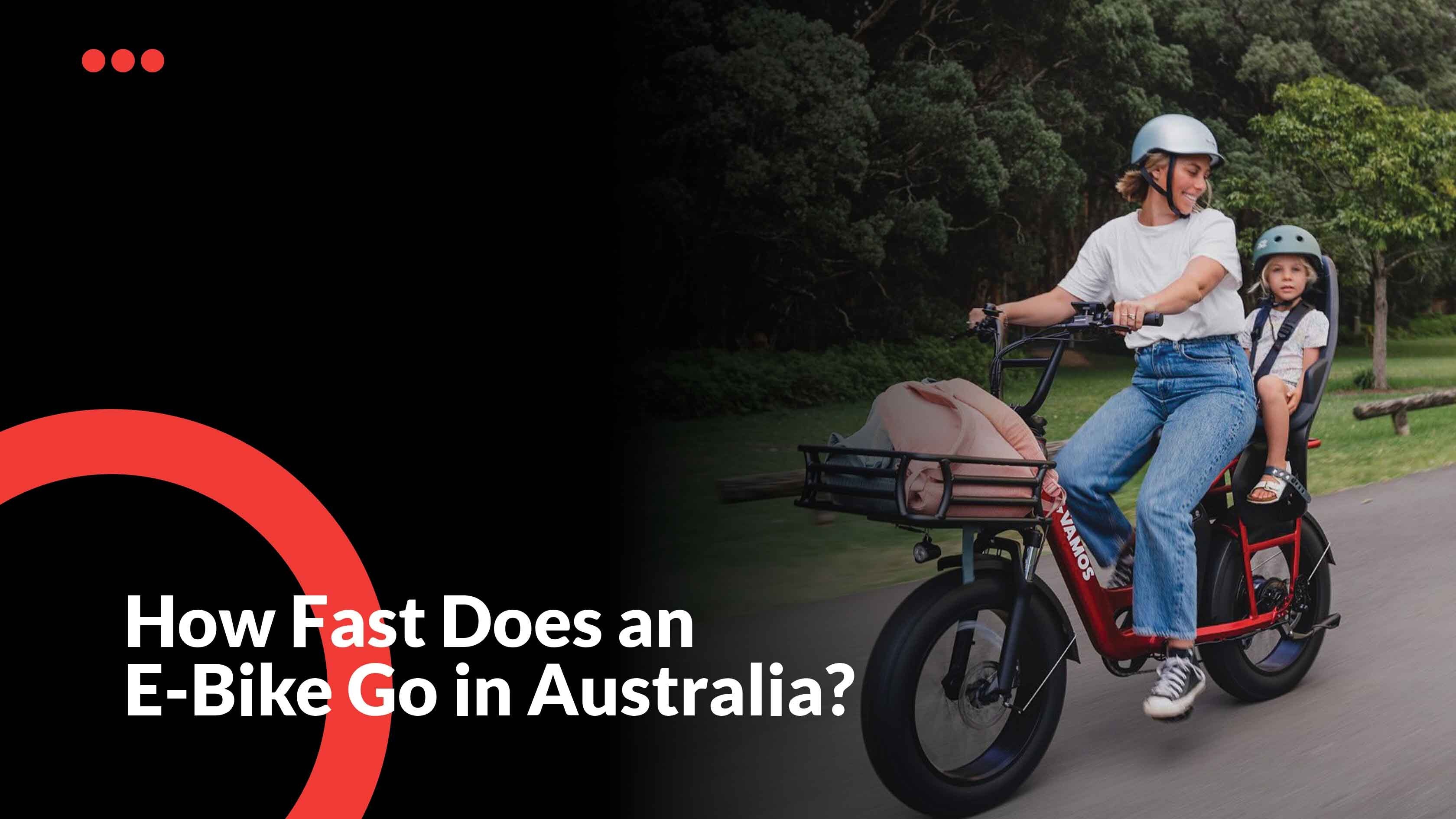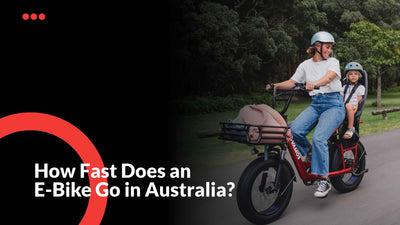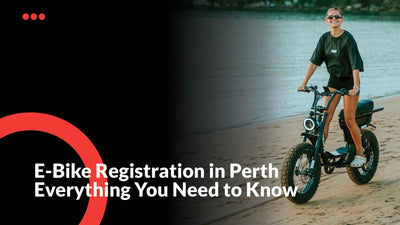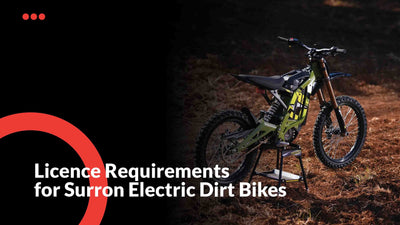How Fast Does an Electric Bike Go in Australia?

Electric bikes have taken Australia by storm, providing speed, efficiency, and eco-friendly commuting. But how fast does an electric bike really go? The answer depends on several factors such as motor wattage, terrain, and most importantly, Australia’s strict e-bike speed laws.
In this guide, we’ll break down how fast e-bikes can go, from 1000W to 3000W models, explore state-wise regulations, and help you choose the right e-bike for your needs, whether it’s a city cruiser or an off-road beast.
Understanding Electric Bike Speed in Australia
Electric bike speed in Australia depends on the motor power, terrain, and riding mode. Whether you’re cruising through city streets or riding on rugged trails, understanding these factors will help you ride smarter and within the law.
Factors That Affect Your E-Bike Speed
Motor Wattage & Battery Power
The motor’s wattage directly determines how much power you get.
-
A 250W e-bike caps at around 25 km/h.
-
A 1000W electric bike top speed can reach 40/45 km/h.
-
A 2000W or 3000W electric bike top speed can go beyond 70 km/h when unrestricted.
-
Higher wattage means stronger acceleration and more torque, but also higher battery drain.
Rider Weight & Terrain Type
Lighter riders on flat surfaces achieve faster speeds. On the other hand, hills, grass, or gravel reduce acceleration and overall top speed. A 1000W motor climbing steep terrain performs differently from one cruising on pavement.
Pedal-Assist vs Throttle Mode
Pedal-assist provides power only when pedalling, ideal for commuters staying within legal limits. Throttle mode propels the e-bike without pedalling, delivering motorbike-like acceleration, but is restricted under e-bike laws in Australia.
Legal E-Bike Speed Limits in Australia
Australian law classifies e-bikes based on their motor power and operation method:
-
25 km/h pedal-assist limit, the legal standard nationwide
-
200W throttle e-bike rule, applying to throttle-only models
-
Off-road vs on-road difference, where high-powered e-bikes (1000W+) are legal only on private land or off-road tracks
These laws ensure safety for riders, pedestrians, and motorists while maintaining consistency across Australian states.
How Fast Does a 1000W Electric Bike Go?
Average Speed Range of 1000W E-Bikes
A 1000W e-bike typically reaches speeds between 40–45 km/h on flat terrain. It’s perfect for riders who crave a little more thrill and torque when climbing hills or exploring countryside tracks. Many models, like the VALK Vortex 3 Electric Mountain Bike and VALK Shuttle 5 Electric Folding Bike, deliver an impressive balance of power, speed, and stability for adventure riders.
Legal Restrictions in Australia
In most Australian states, 1000W e-bikes are not road-legal. They are approved for off-road or private property use only. Riders must follow local guidelines when using them outside public areas.
How Fast Does a 2000W Electric Bike Go?
Average Top Speed of 2000W Models
The top speed for 2000W electric bikes can range between 55–65 km/h, depending on the rider, terrain, and battery output. These models are designed for experienced riders looking for serious performance.
Where You Can Ride a 2000W E-Bike in Australia
You can enjoy 2000W e-bikes on adventure trails, off-road tracks, or farms where public traffic rules don’t apply. For instance, NCM M3 Electric Mountain Bike and the VALK Electric Fat Tyre Cruiser Bike are popular among Australian thrill-seekers who prefer private terrain adventures.
How Fast Does a 3000W Electric Bike Go?
Maximum Speed & Use Cases
A 3000W e-bike is a powerhouse capable of hitting 70–85 km/h on level ground. These bikes are built for off-road thrill riders who prioritise speed, torque, and endurance over daily commuting.
Are 3000W E-Bikes Legal in Australia?
No, 3000W electric bikes are not road-legal anywhere in Australia. They can only be used on private land or enclosed tracks. Riders using these bikes on public roads risk fines or confiscation.
Electric Bike Laws by Australian State (Legal Guide 2025)
E-bike laws differ slightly across Australian states. Below is a quick overview of speed and wattage limits in NSW, VIC, QLD, WA, SA, and TAS.
Electric Bike Laws in New South Wales (NSW)
-
Legal motor power: up to 250W (pedal-assist only)
-
Max speed: 25 km/h
-
1000W+ bikes allowed off-road only
Electric Bike Laws in Victoria (VIC)
-
Same as NSW, 250W pedal-assist limit
-
Throttle up to 200W allowed
-
No registration required for compliant models
Electric Bike Laws in Queensland (QLD)
-
Allows 200W throttle or 250W pedal-assist bikes
-
Speed capped at 25 km/h
-
1000W+ only legal for private use
Electric Bike Laws in Western Australia (WA)
-
Permits 250W pedal-assist bikes
-
Top legal speed: 25 km/h
-
Higher wattages for off-road use only
Electric Bike Laws in South Australia (SA)
-
Pedal-assist up to 250W
-
25 km/h speed limit
-
1000W and 2000W banned on roads
Electric Bike Laws in Tasmania (TAS)
-
National rule applies, 250W max and 25 km/h
-
Throttle e-bikes limited to 200W power
Comparing E-Bike Speeds by Wattage (1000W vs 2000W vs 3000W)
|
Power |
Average Speed (km/h) |
Legal for Roads? |
Best Use |
|
1000W |
40–45 |
No |
Off-road, trails |
|
2000W |
55–65 |
No |
Private or adventure |
|
3000W |
70–85 |
No |
Extreme off-road |
Choosing the Right E-Bike for Your Needs
Selecting the perfect e-bike comes down to balancing speed, range, and safety.
Speed vs Range vs Safety
More wattage means more speed, but it also means higher energy consumption. A 3000W e-bike drains its battery much faster than a 250W commuter model. Always match your motor power to your riding purpose:
-
Commuting: stick to 250W–500W legal bikes.
-
Adventure riding: opt for 1000W–2000W off-road models.
-
Extreme thrill: 3000W+ bikes for private tracks only.
Popular Models Among Australian Riders
-
250W–500W e-bikes like the NCM Paris Max Folding Electric Bike for city commuters
-
1000W–3000W e-bikes such as the VALK Vortex 3 Electric Mountain Bike and E-Ozzie’s range of high-performance e-bikes for riders chasing off-road performance
E-Ozzie offers both categories, ensuring you find the perfect ride whether you’re heading to work or hitting dirt trails.
Final Thoughts — How Fast Should You Really Go?
So, how fast does an electric bike go in Australia? Legally, e-bikes are capped at 25 km/h, but high-powered models can exceed 80 km/h on private property. For daily commutes, choose compliant e-bikes like NCM Munich Electric Trekking Bike or Mamba Lightning Electric Bike, designed for safety and comfort within legal limits. If you crave adventure, the VALK Vortex 3 or E-Ozzie’s high-speed models offer unmatched speed, torque, and off-road capability.
At E-Ozzie, you can test-ride your next e-bike, explore both legal and high-performance models, and find one that matches your speed, purpose, and lifestyle perfectly.
FAQs About E-Bike Speed & Legalisation in Australia
Q1: What is the legal e-bike speed limit in Australia?
A: The national limit is 25 km/h for pedal-assist bikes under 250W motor power.
Q2: Can I ride a 1000W e-bike on Australian roads?
A: No. 1000W e-bikes are restricted to off-road or private property only.
Q3: Do laws differ across Australian states?
A: Yes. All states follow the same 25 km/h limit, but enforcement and specific wattage rules may vary slightly.
Q4: What is the fastest e-bike E-Ozzie sells?
A: E-Ozzie’s e-bikes can reach impressive speeds, with some off-road models reaching up to 120 km/h in off-road mode, making them some of the fastest e-bikes available in Australia.
Key Takeaway
Electric bikes combine technology and performance for every type of rider. Whether you’re after a commuter-friendly 250W or a thrill-packed 3000W model, always ride responsibly and within the limits of Australian law. Ready to find your perfect e-bike? Visit E-Ozzie today and explore Australia’s most powerful and legal electric bikes.









Leave a comment